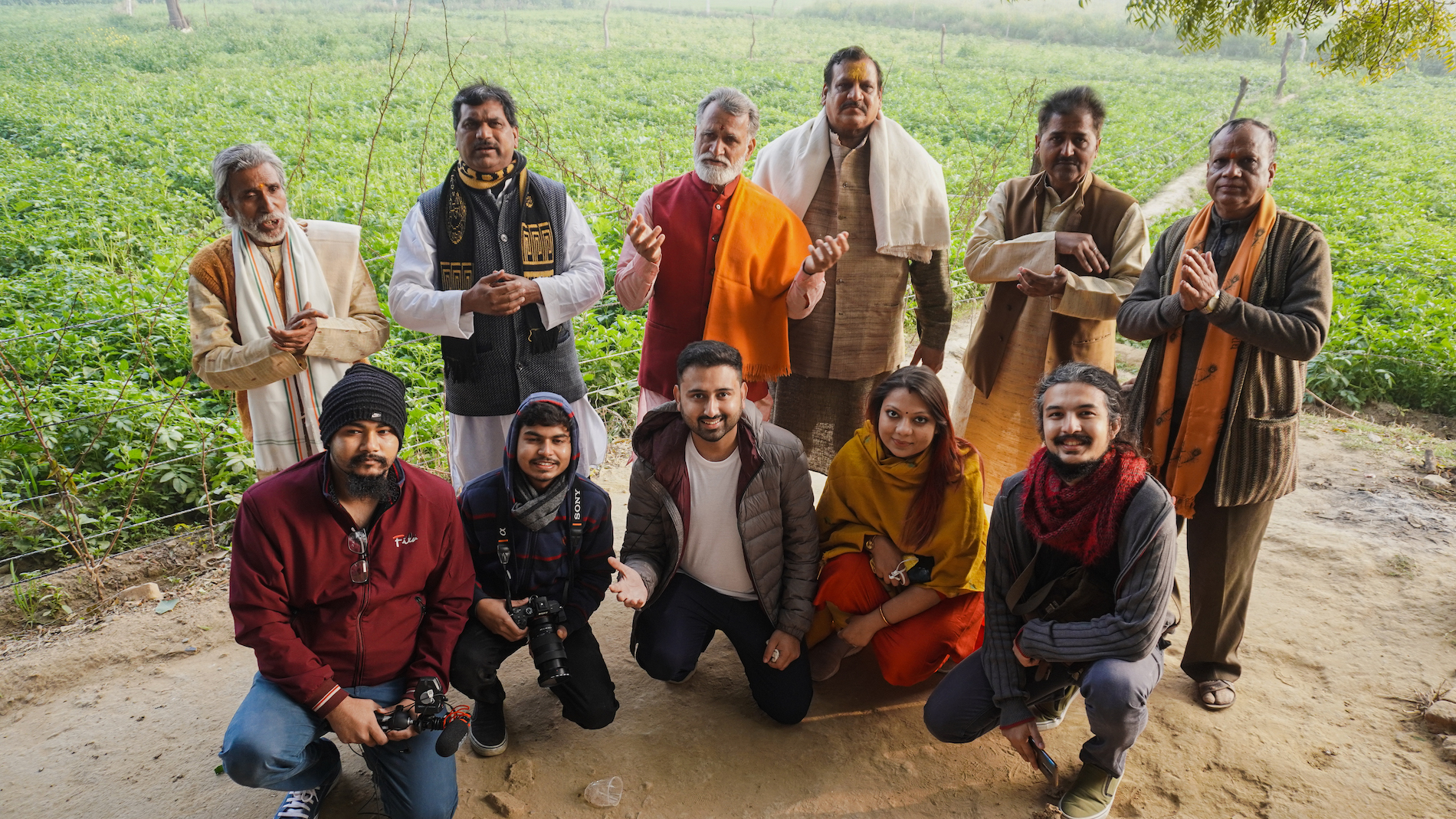
As the quest for the songs of Uttar Pradesh started, one could feel the rush of happiness that felt like a homecoming, as if every lane and every tree welcomed us with arms wide open. Before this, most of our documentation was in Rajasthan, Uttarakhand, Himachal, Punjab, Jharkhand, and Karnataka. This was the first time we got a chance to document the diverse folk forms of Uttar Pradesh. And the whole vibe of Uttar Pradesh was very welcoming and homely.
The documentation started in Braj, the mystical land of Radha Krishna, and the notes (swars) of Rasiya, talking about the divine love of Radha-Krishna, engulfed us in a deep sense of warmth as we met a few artists and learned about the folk forms and different songs during the research trip.
Thanks to All India Radio, we could reach out to artists from Mathura, Vrindavan, and Agra. We got a chance to explore the famous Braj Rasiya, Swang, Mayur nritya, Charkhula, to Qawwali. To document one such artist, we reached the calm and beautiful village named Raya, about 16 km away from Mathura town. As we were getting closer to our destination, we could faintly hear the melodic voice of Pt. Damodar Sharma, through mists and lush mustard fields, was waiting for us with his group under a tree next to the temple of the village deity Parashuram.
Damodar has a very charismatic persona which reflects in his performance. He started his artistic journey at a very young age when he used to play the role of Ram in Rasleela and nautanki. After the demise of his father, his mother handed him Ramcharit Manas, which has been a source of learning in his life. He has very high regard for his mother and considers her to be his biggest inspiration.
Damodar had his first taste of folk music under the mentorship of Omkar Nath, who also happens to be from his village, Raya. He has been playing the harmonium with him since the 90s. After having his training in folk music, he realized that it’s very important to know classical music to make the songs sound more bright and dynamic. Kalyan Sen was his guru, from whom he learned classical gayan and from Prem Rawat – sugam sangeet.
“Music is the gift of Goddess Saraswati. If somebody devotes time with utmost sincerity, then music connects you with the Lord.”
Damodar, even at the age of 57, practices and does Riaz ritualistically every day. The reflection of his devotion and sincerity is seen in his team members, who performed along with him. They were very well-versed and sorted, and shooting them was a calm experience. The most interesting part of their documentation was this instrument called Esraj, a unique instrument that looks like Sarangi but sounds much sweet and melancholic, and with the notes of Gajendra Pathak, we just went on a roller coaster ride of emotions. Gajendra Pathak has been pursuing music as a profession from a very young age. He is a multifaceted artist. He has command over many instruments, including esraj, sitar, veena, Rudra veena, and Saraswati veena. Apart from being a well-known instrumentalist, he is also an AIR-approved Haveli Sangeet singer. This was the first time that we were recording an Esraj. It excited the entire team behind the documentation.
The first song they performed was a Rasiya named Deja daadh ko Daan in Daan Leela, a song of separation and appeal, where Udhav was asked to send the message to Krishna that she (Radha) is not playing Holi with anyone except him. Hence, wants him back at the earliest. The song is full of innocence, and when Mohan Shyam played his flute, we got into the trance of the divine love of Radha-Krishna that we could feel in the air of Raya.
Damodar left singing Rasiya 30-35 years back. Now he is more into swang and has been approved by AIR for it, but we were fortunate to hear two rasiyas from him. He also does Bhagawat Paths and feels very contained to get this opportunity to extend his humble service of preaching the stories and wisdom of the Lord to the greater mass. While we were explaining about ATMOS, the whole idea behind our work, and the listening experience that the world is going to have for the first time after listening to Indian folk music in Dolby Atmos, we realized the importance of documenting and preserving the varied and rich cultural goldmine of talents around us.
